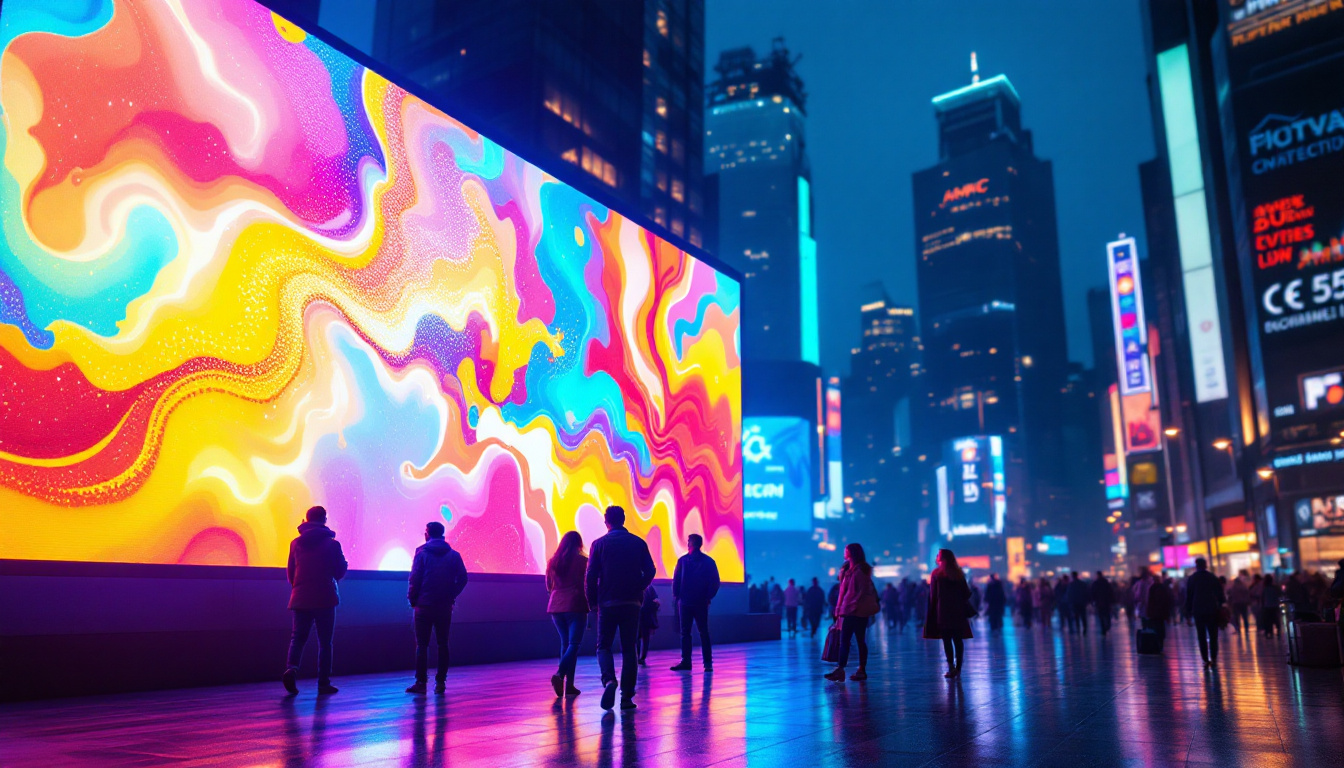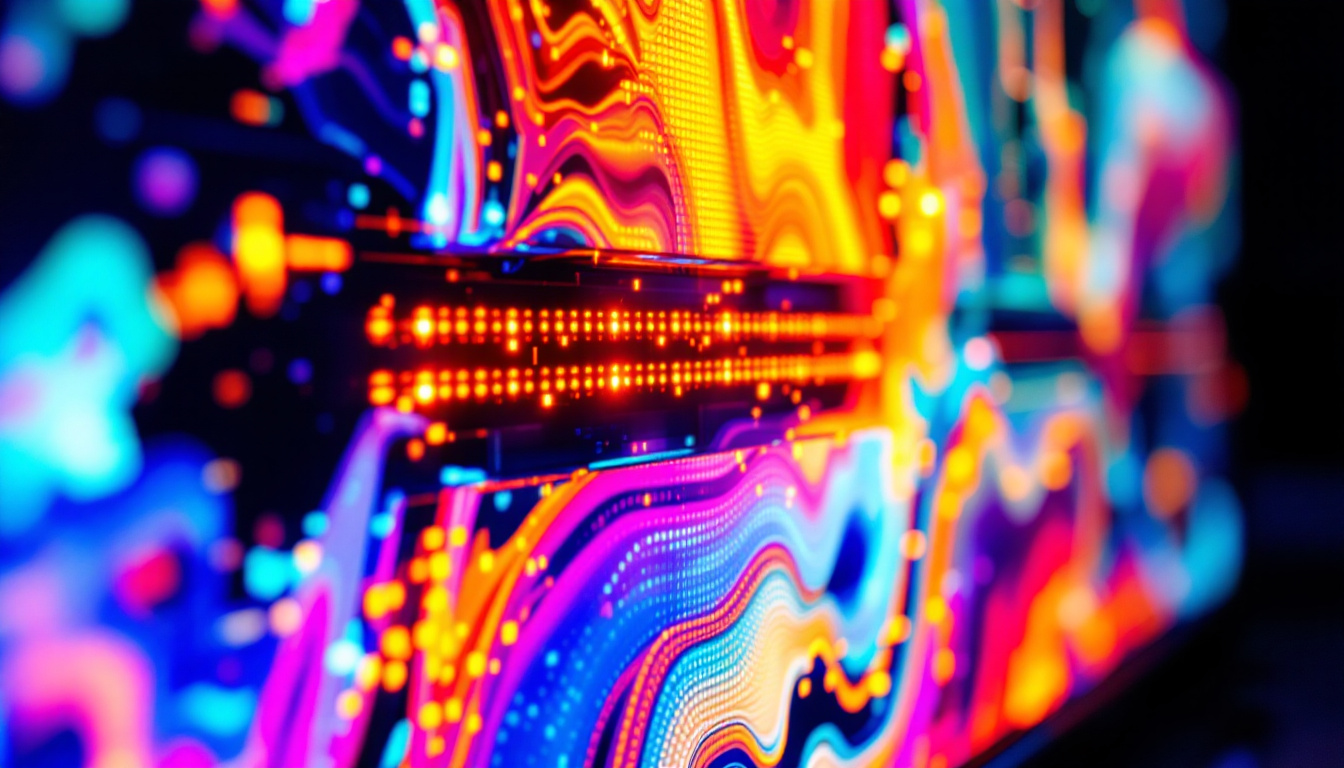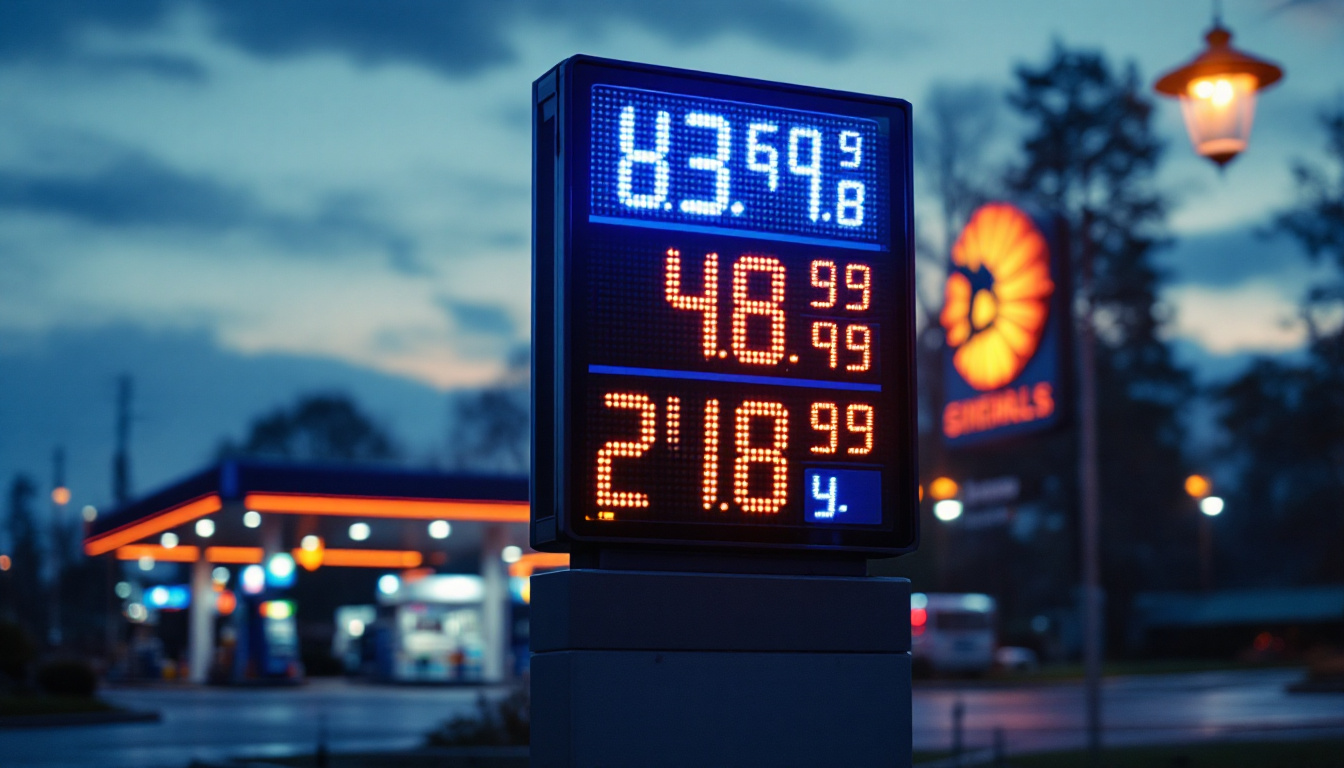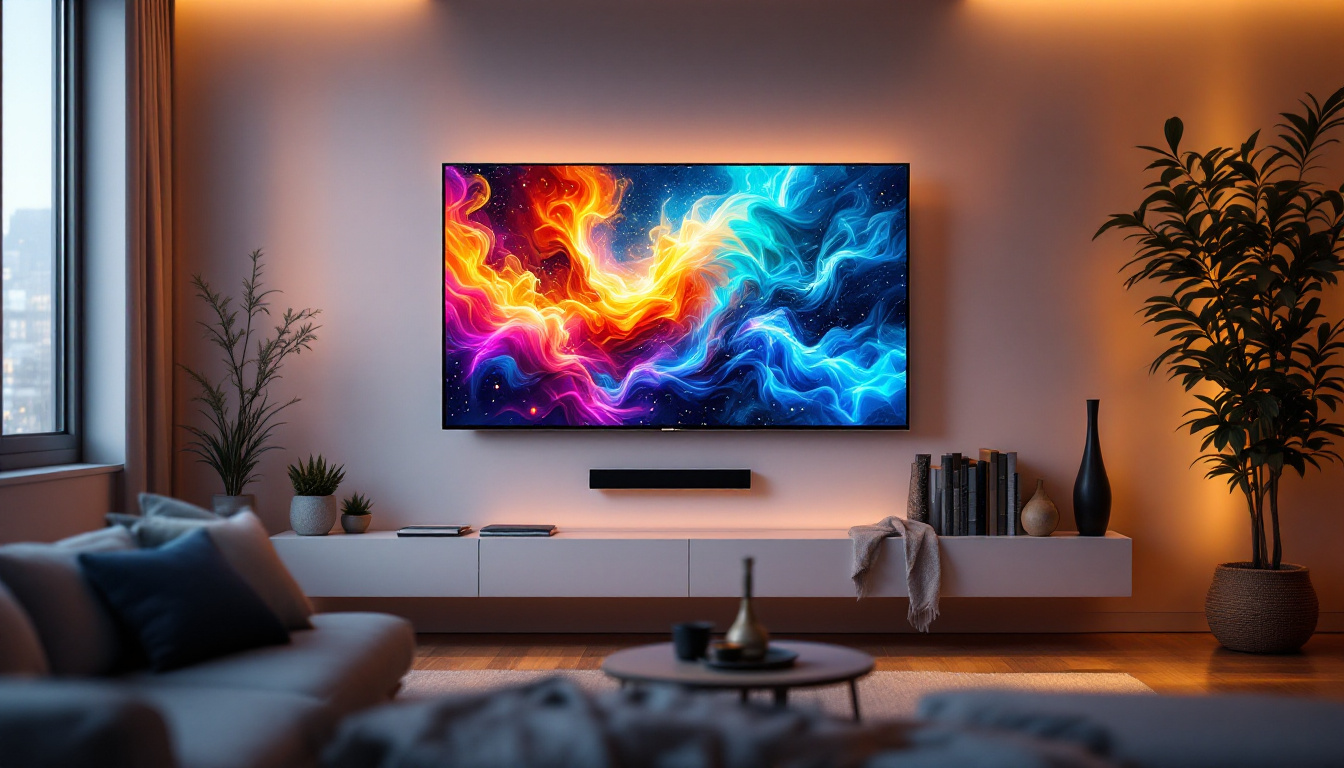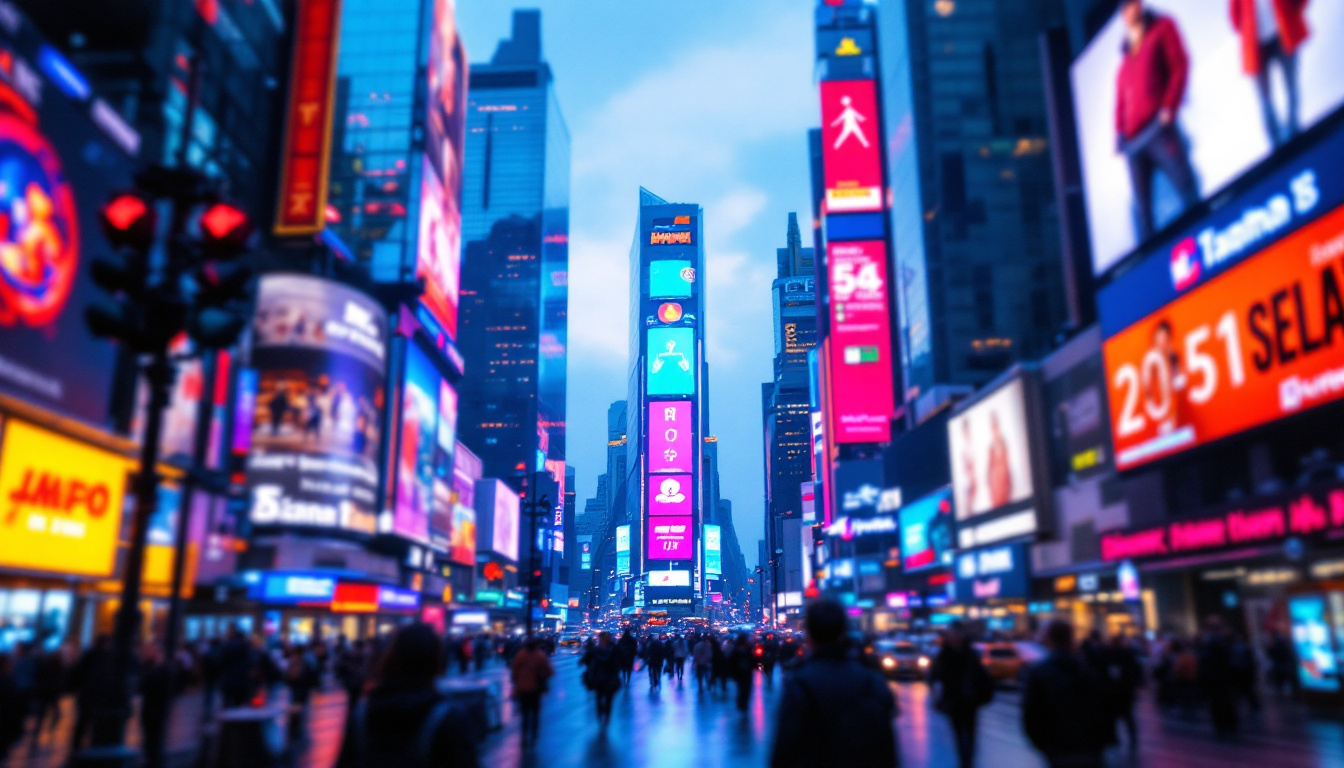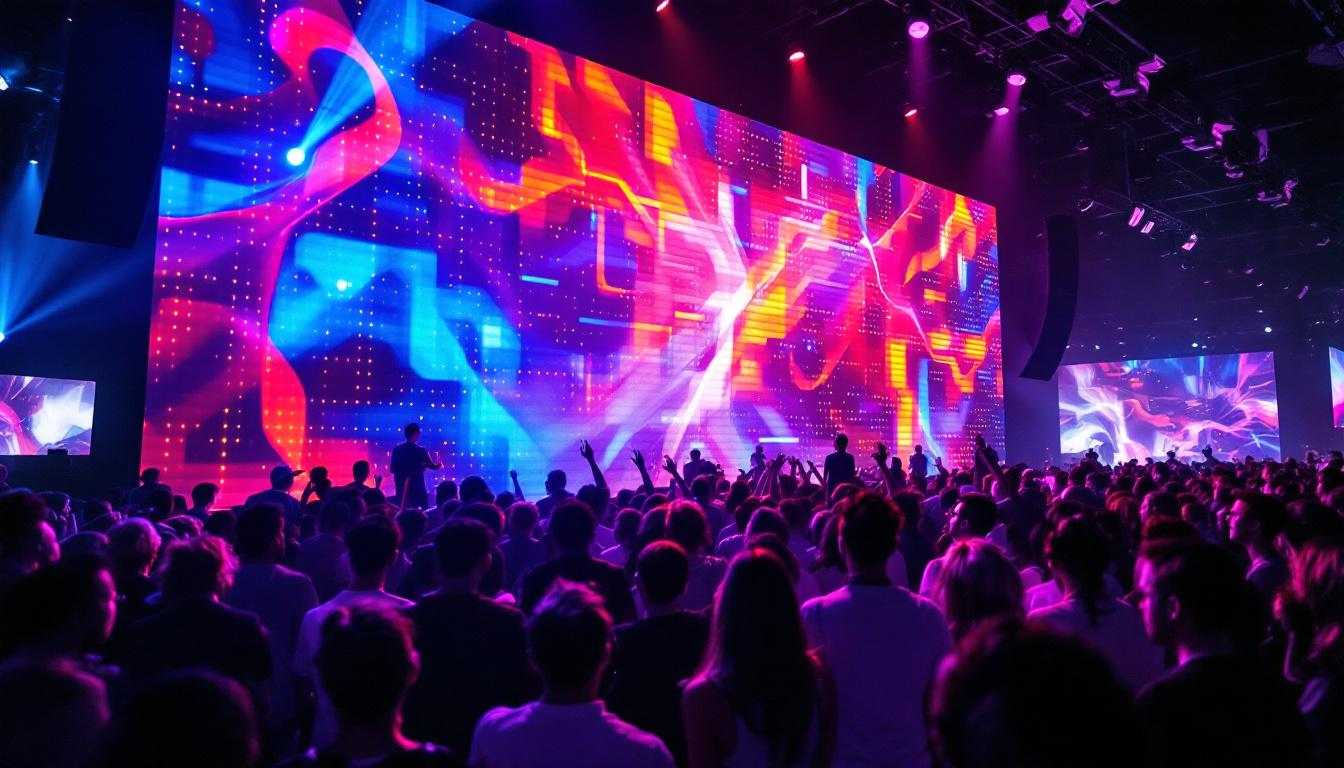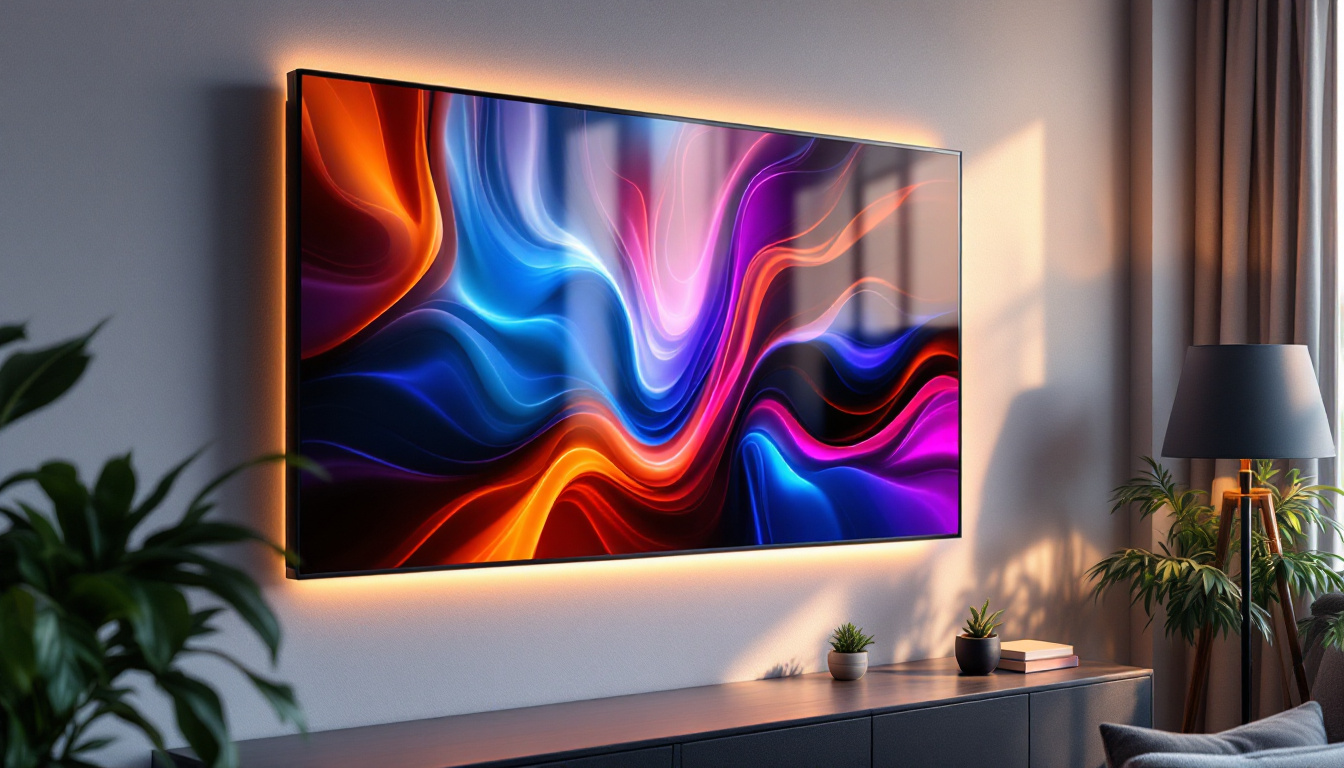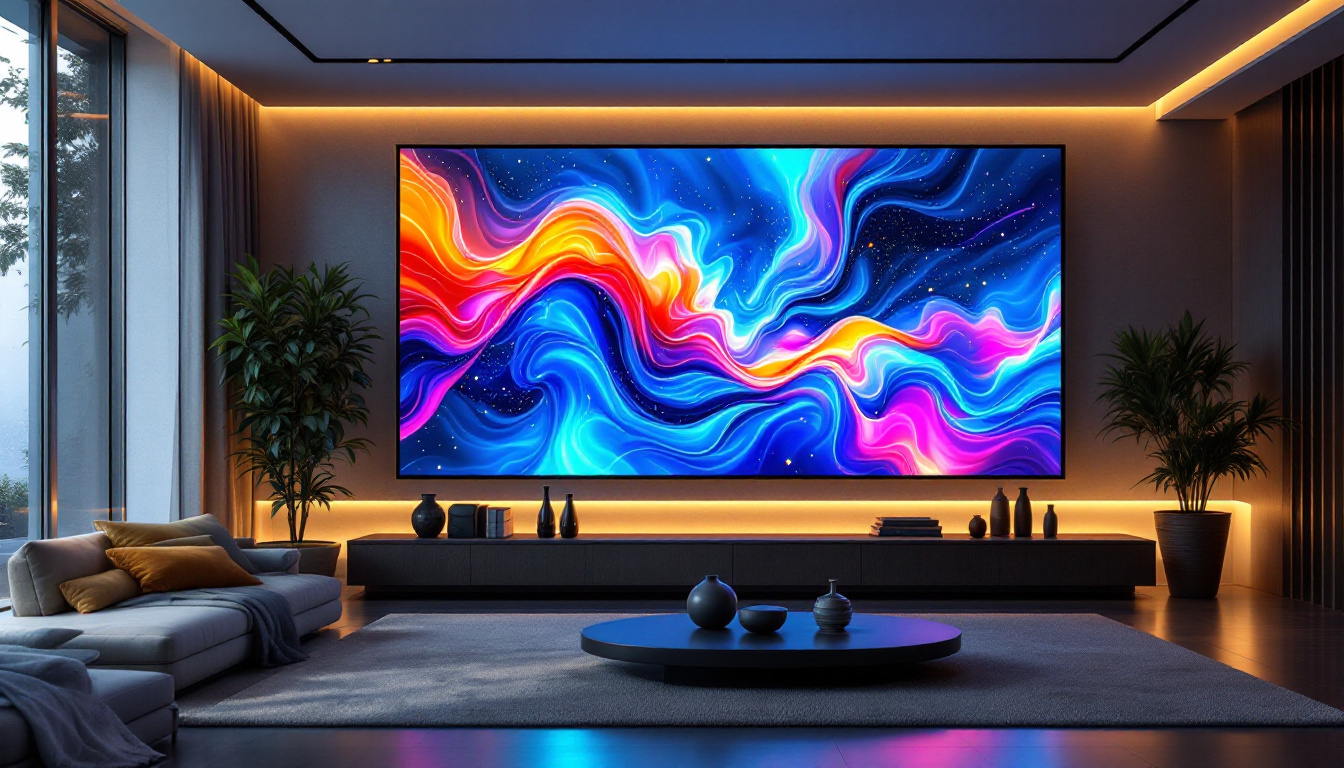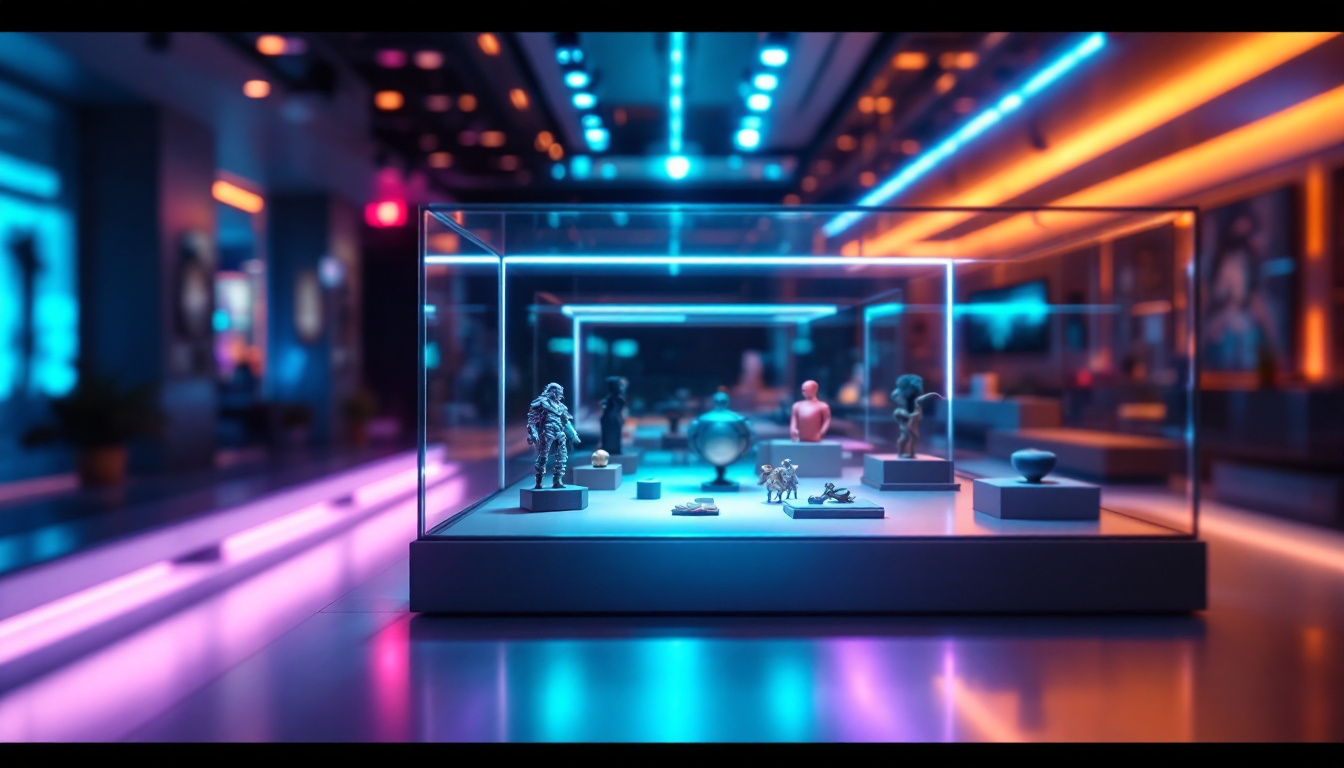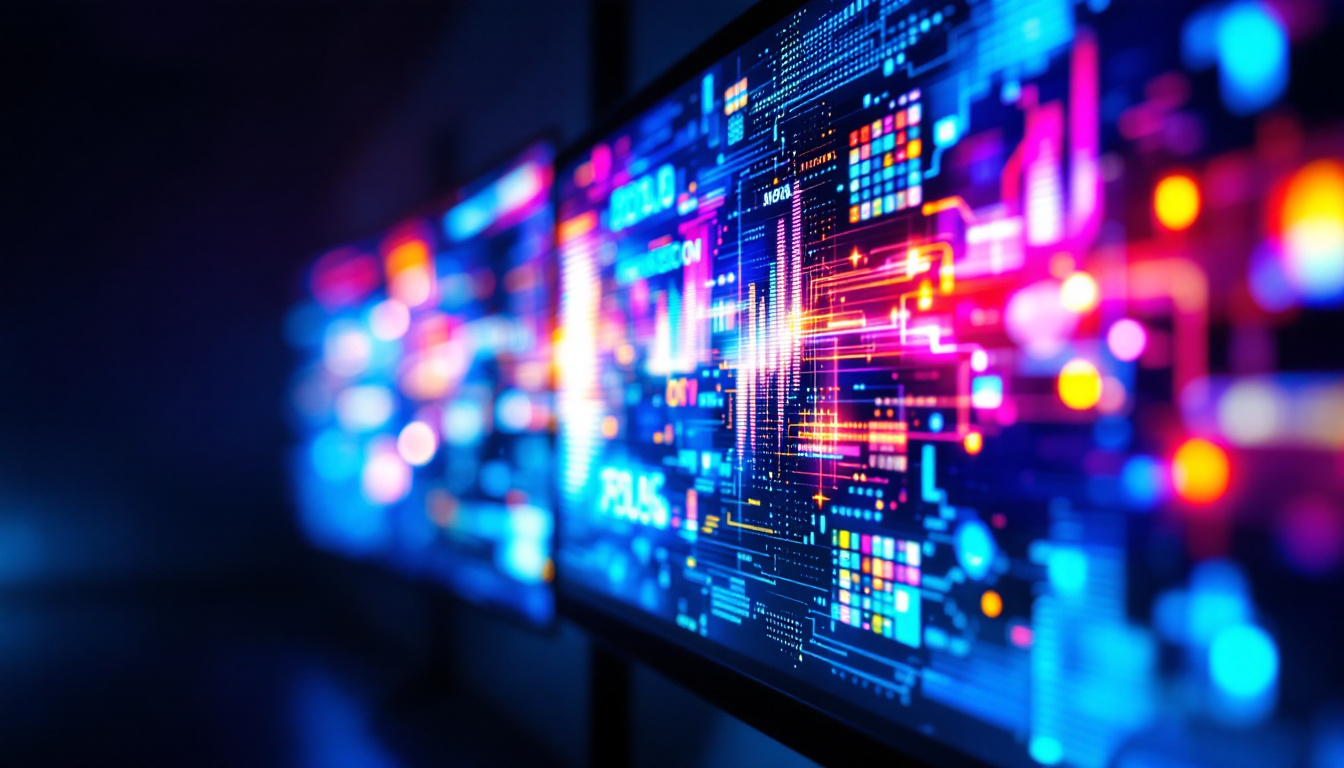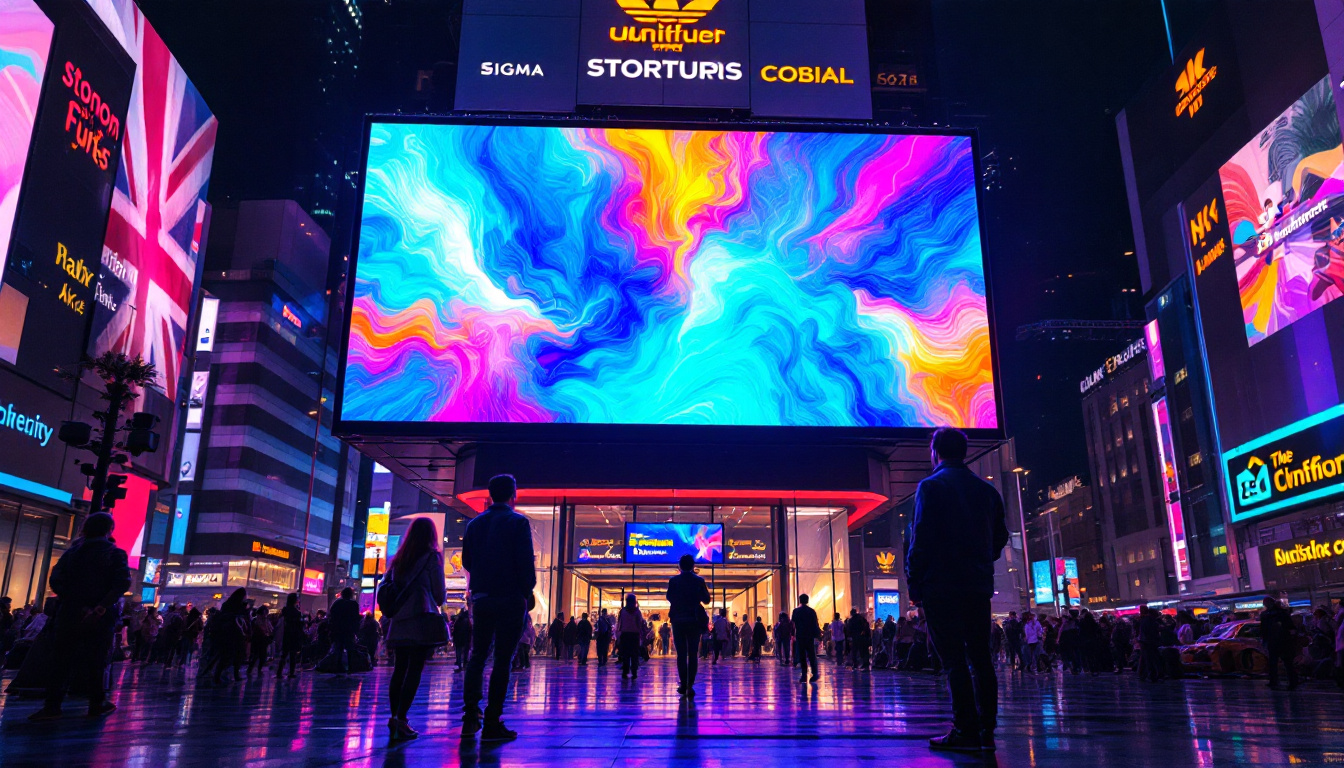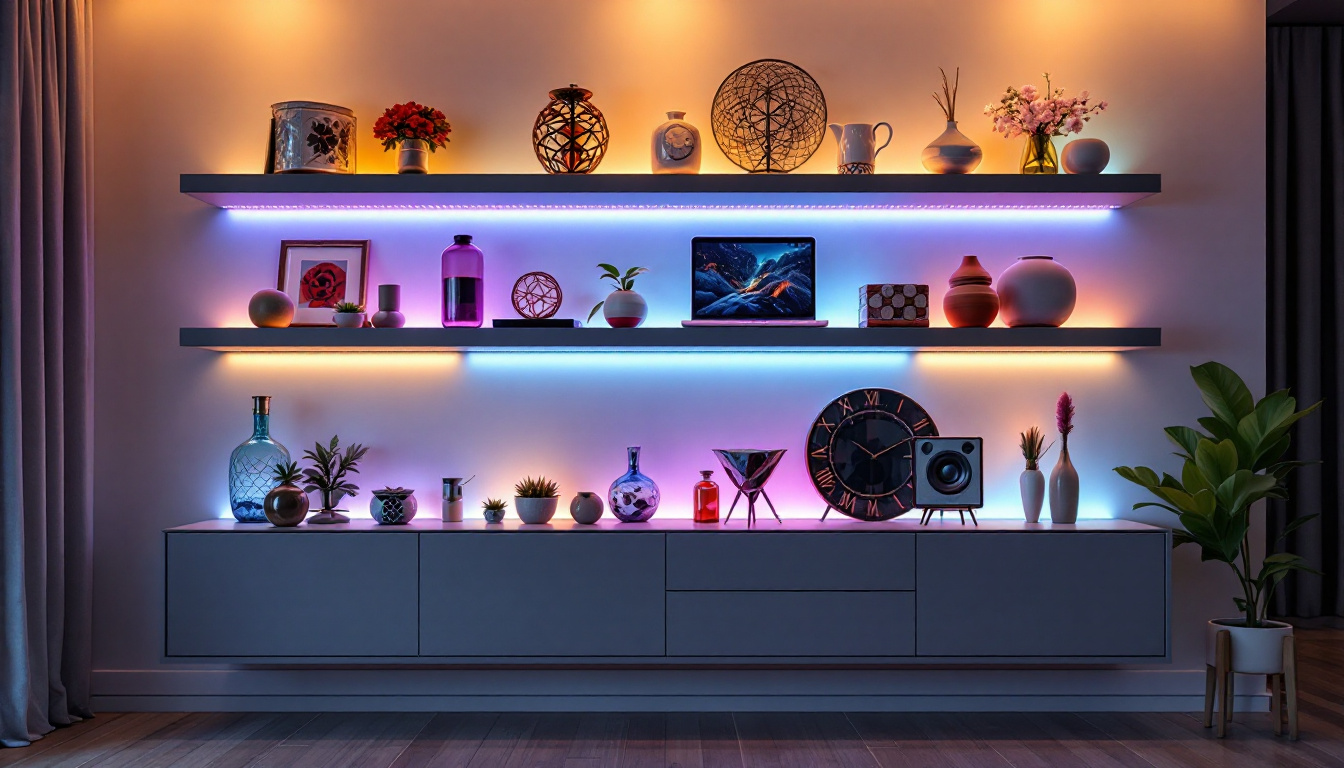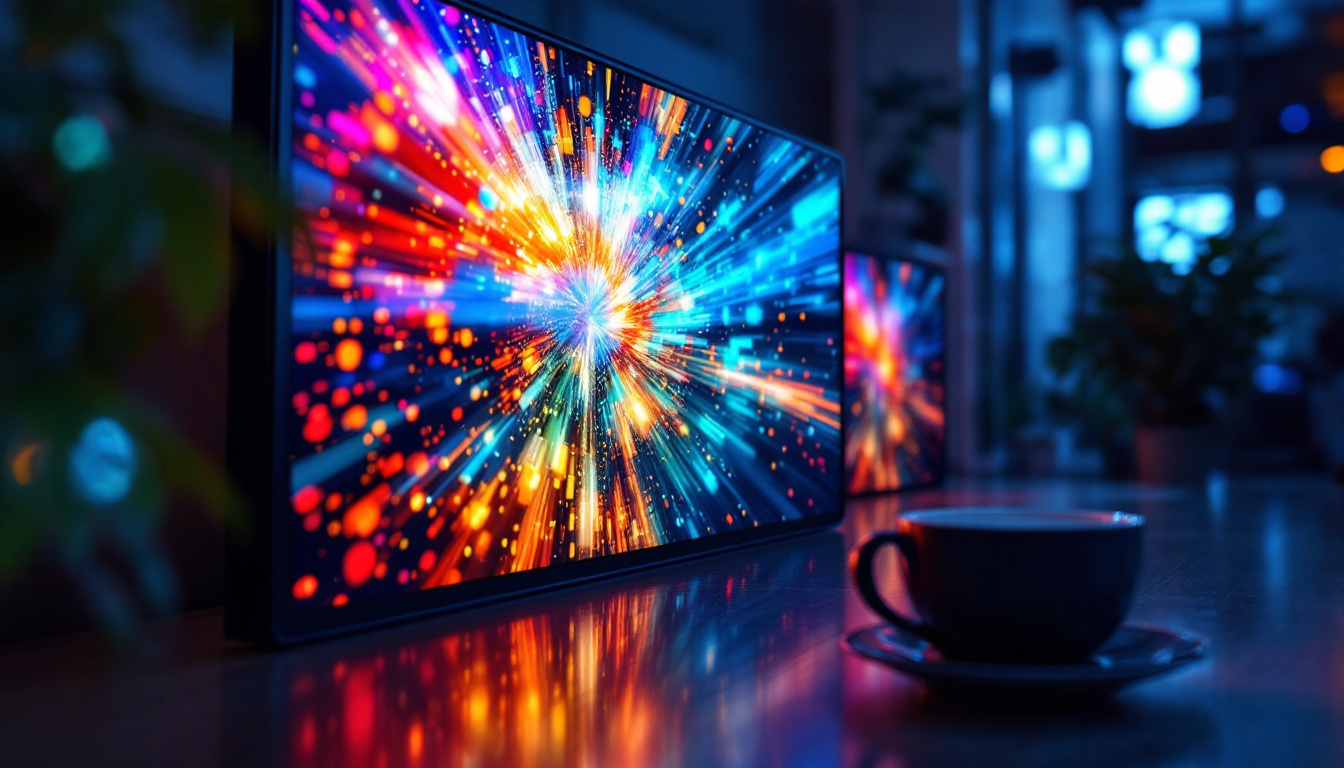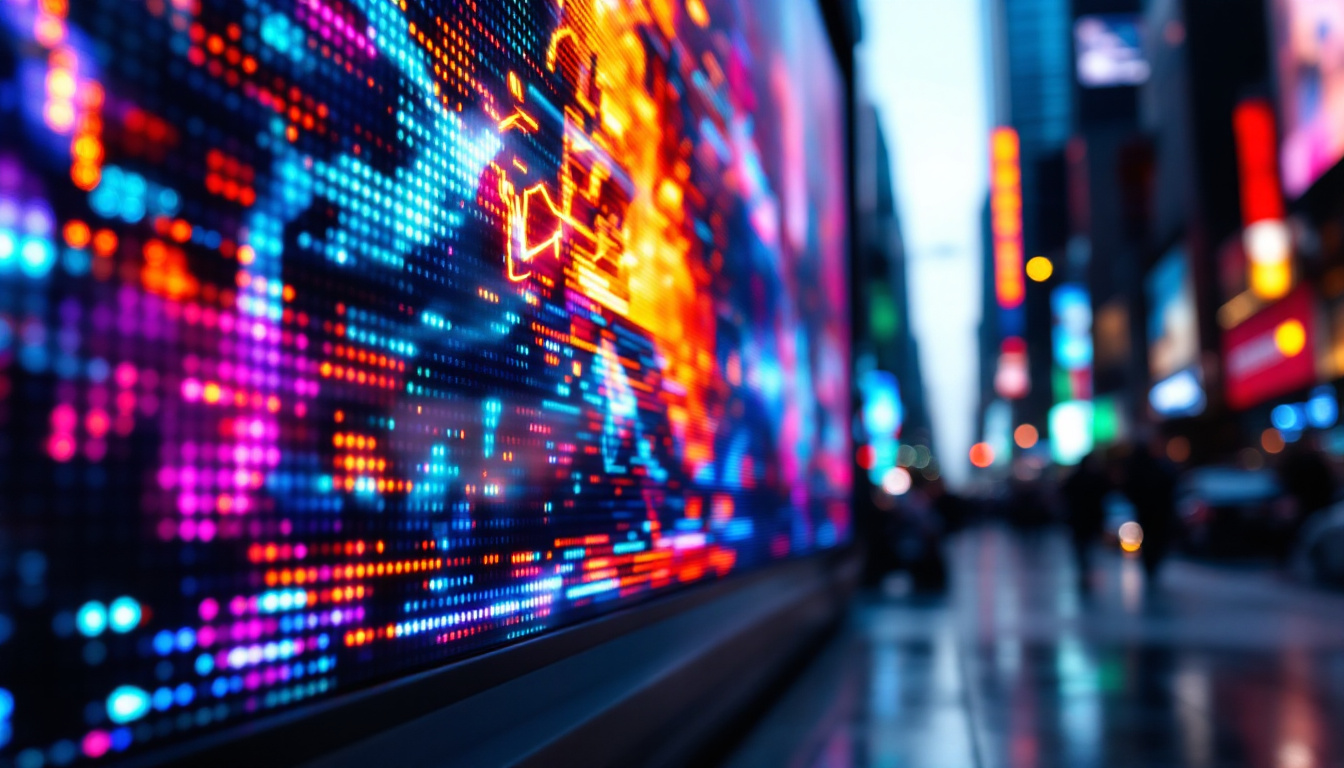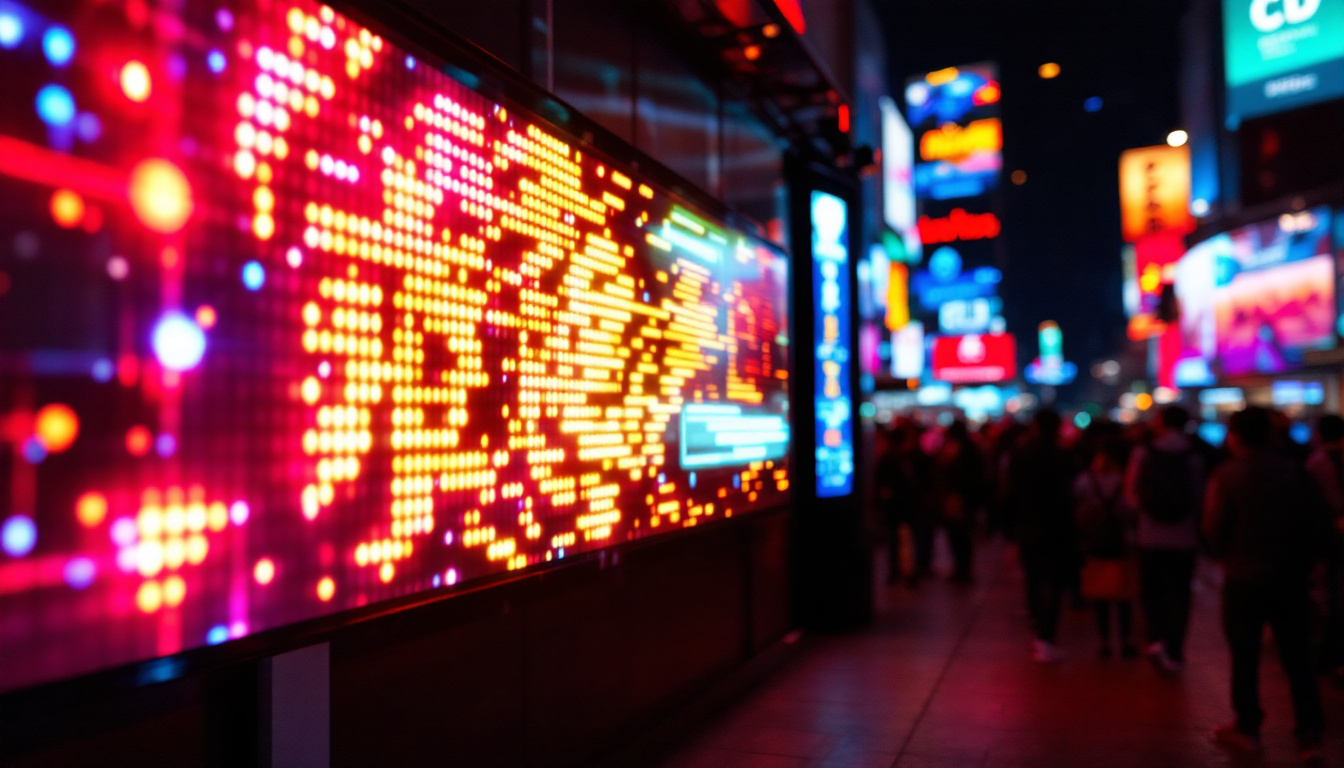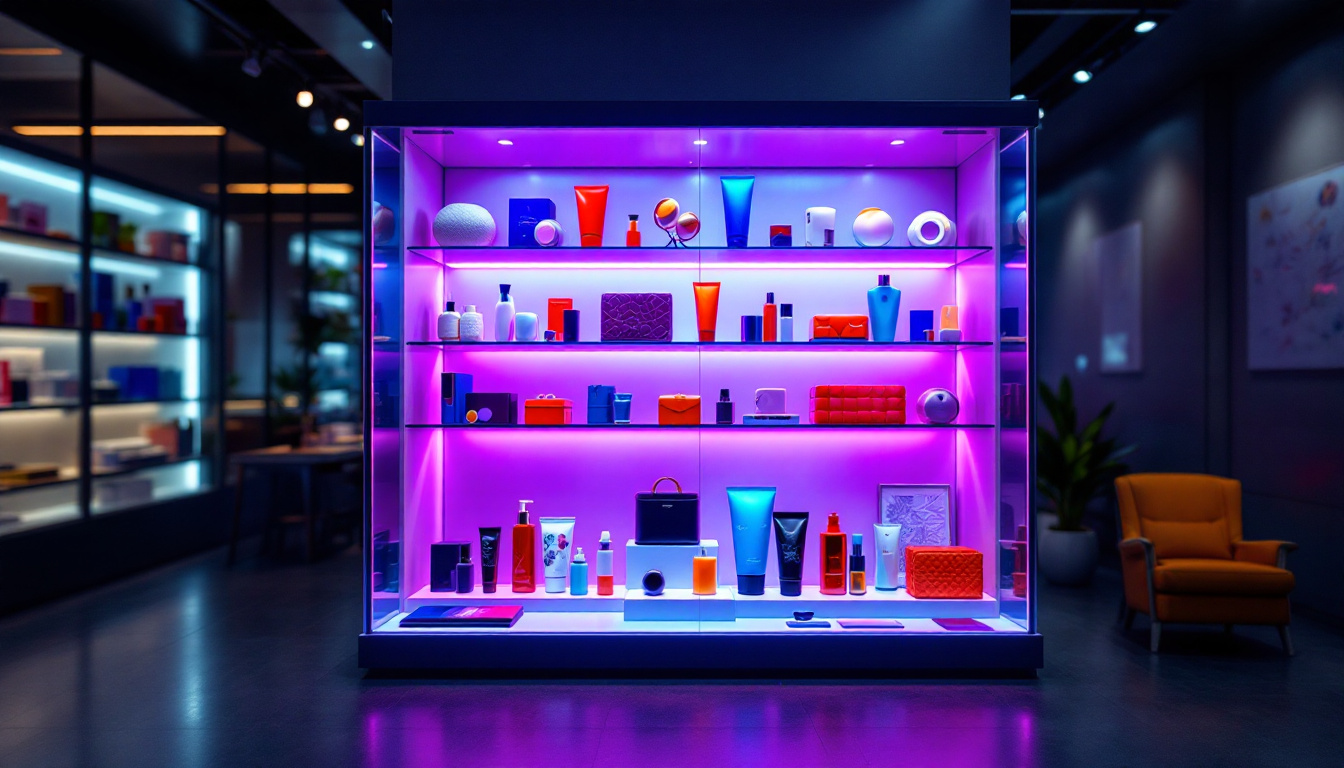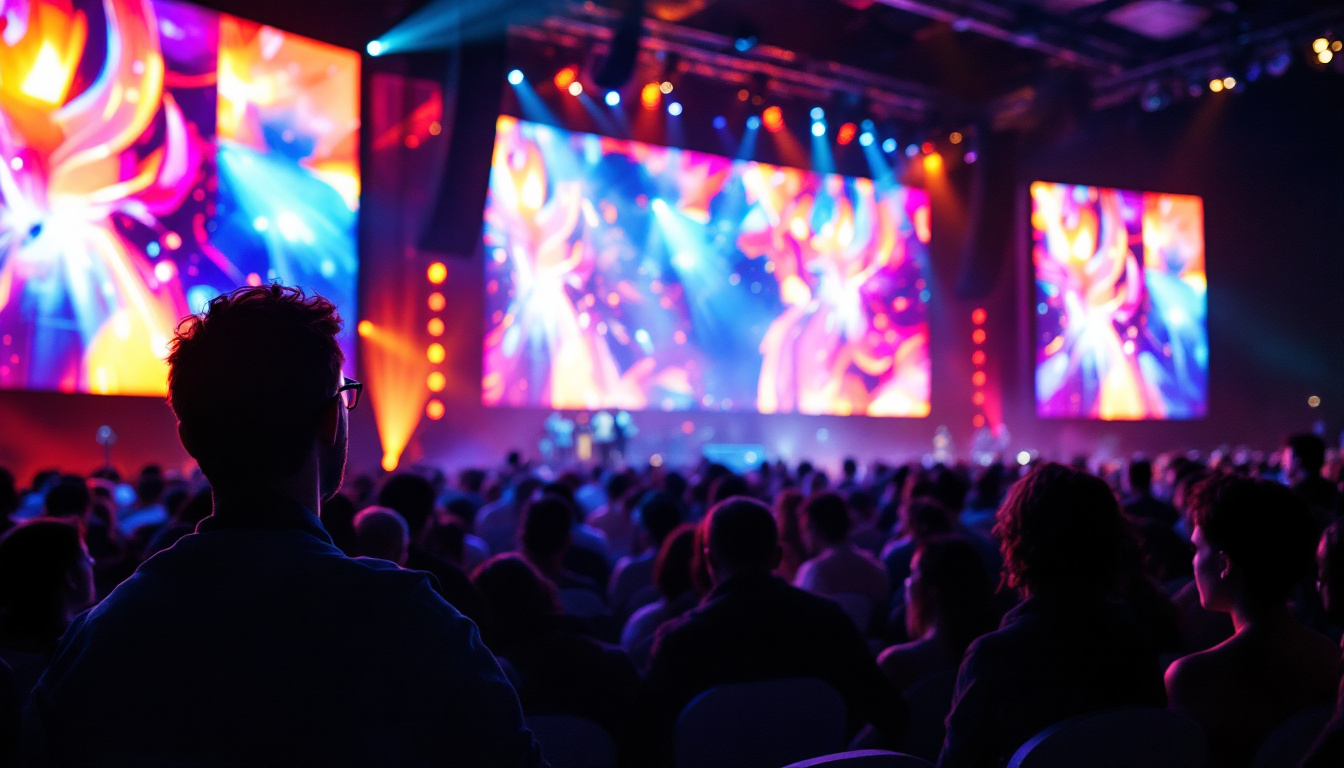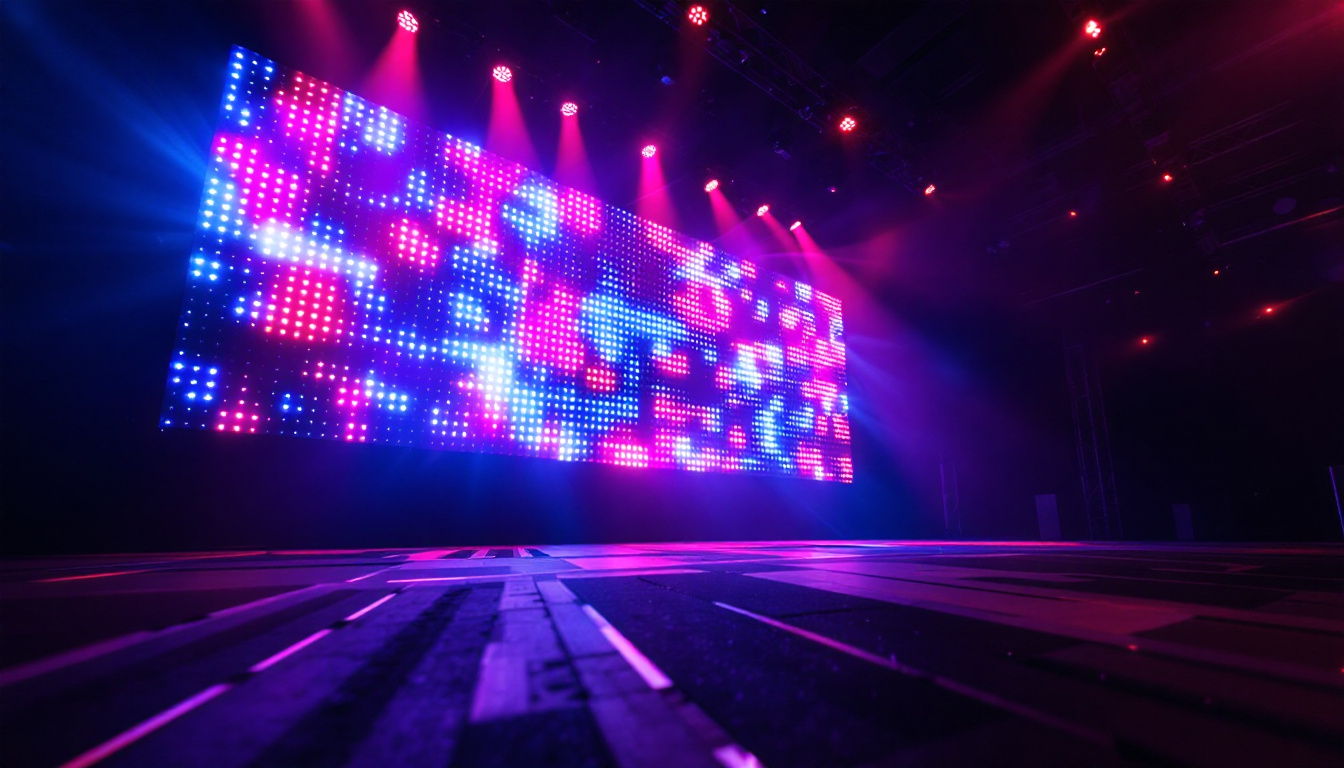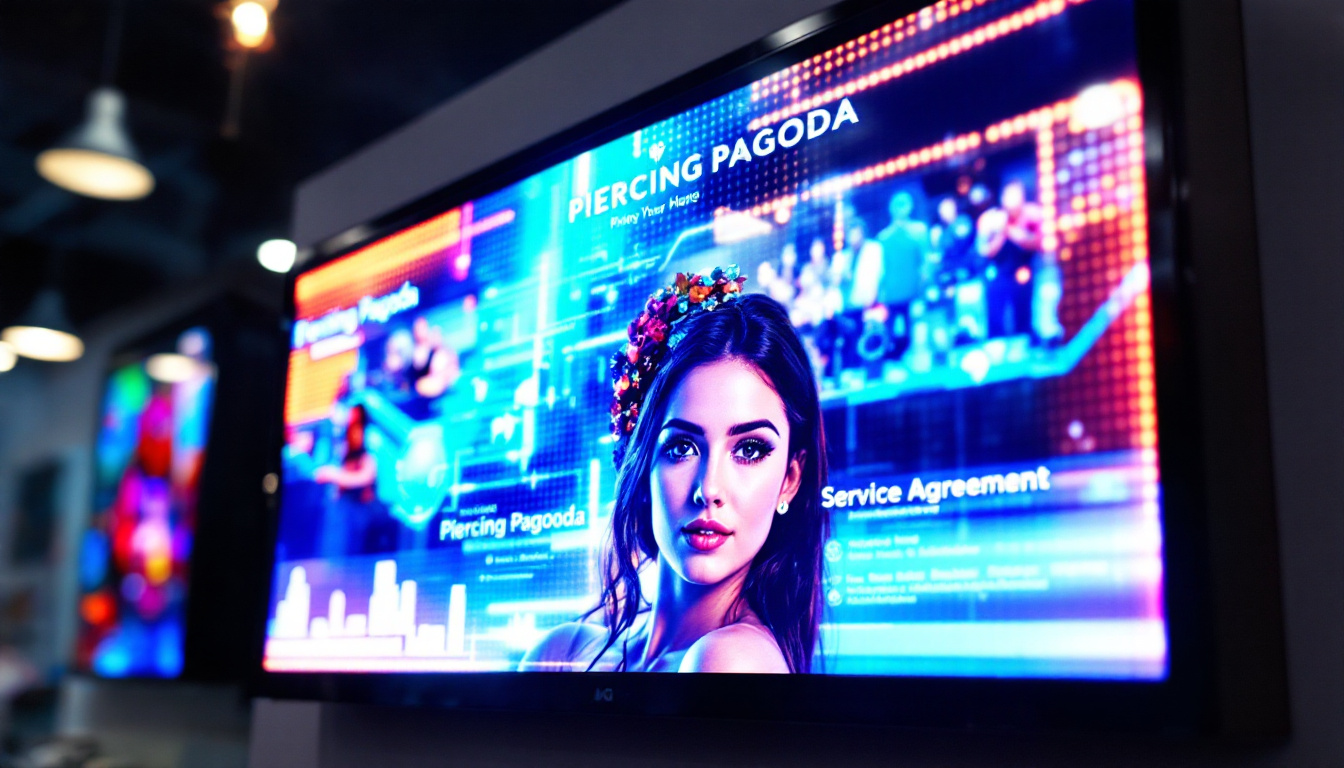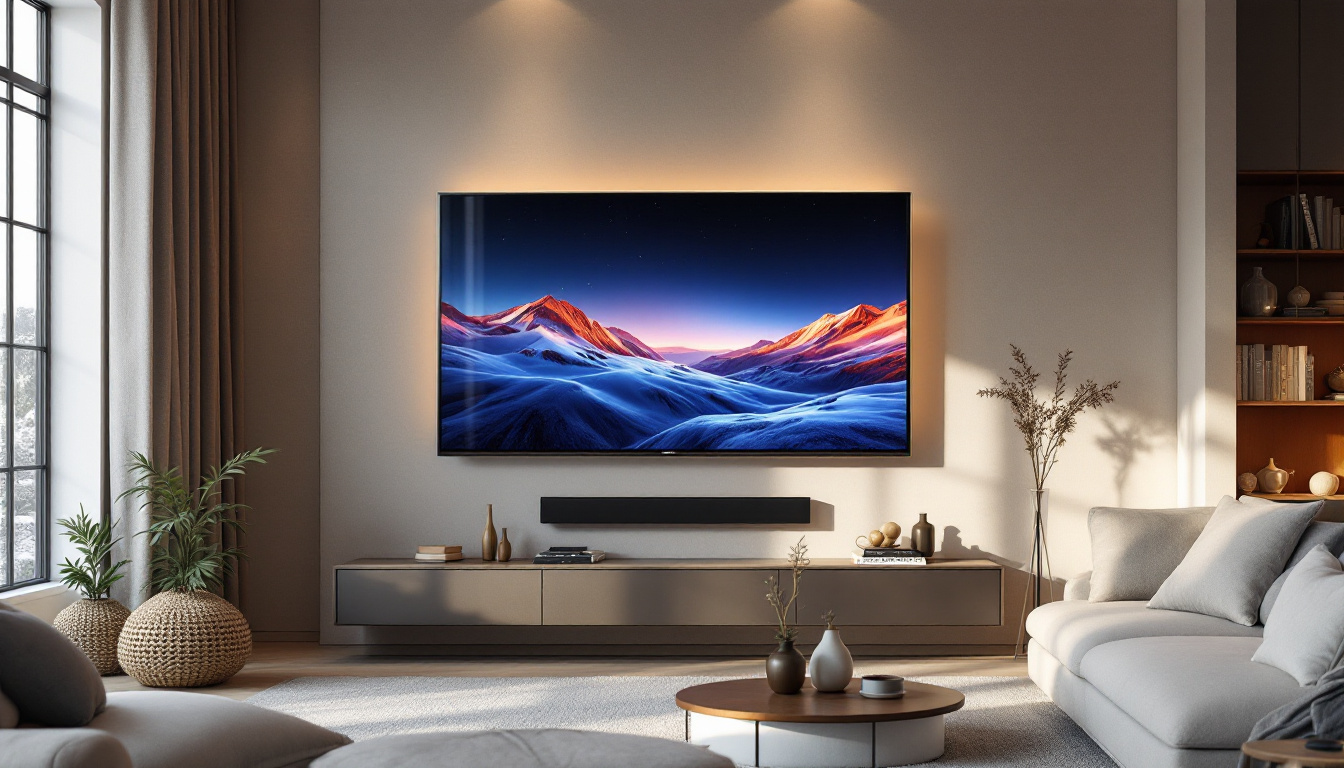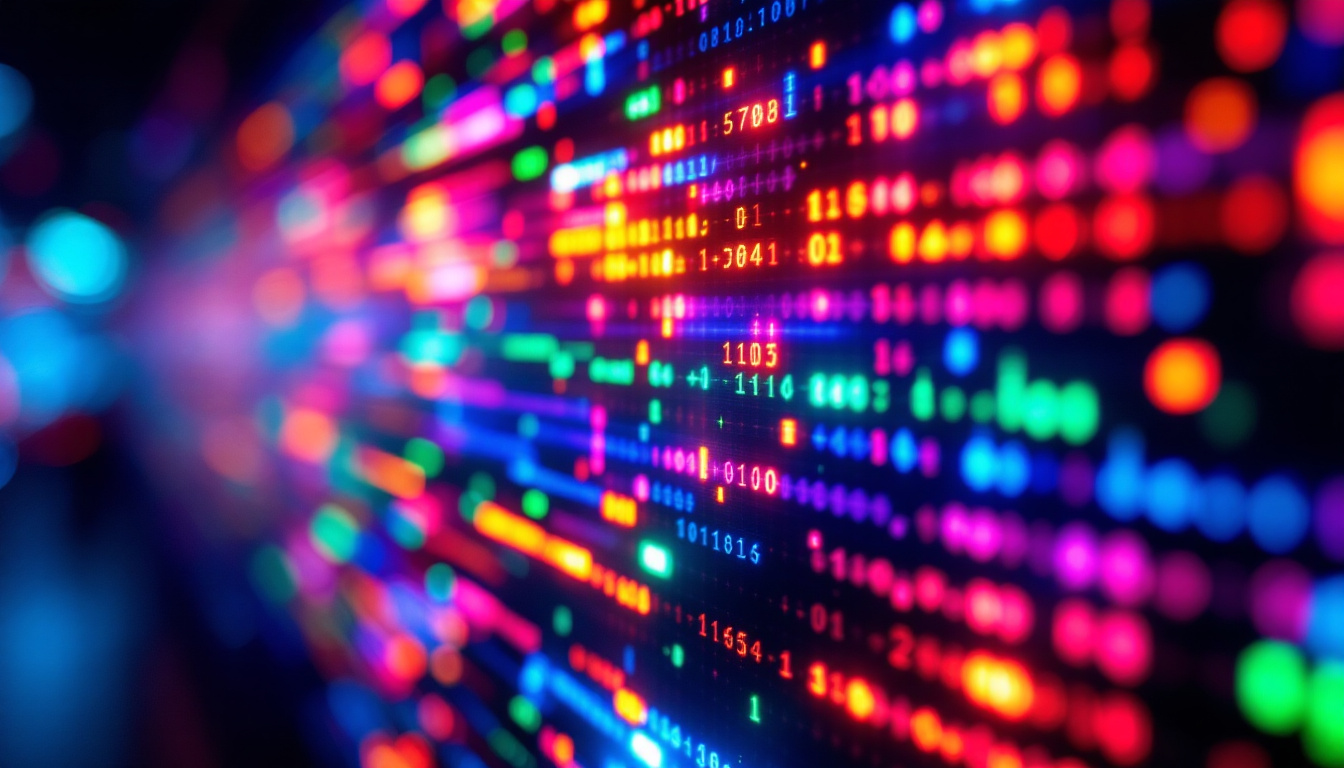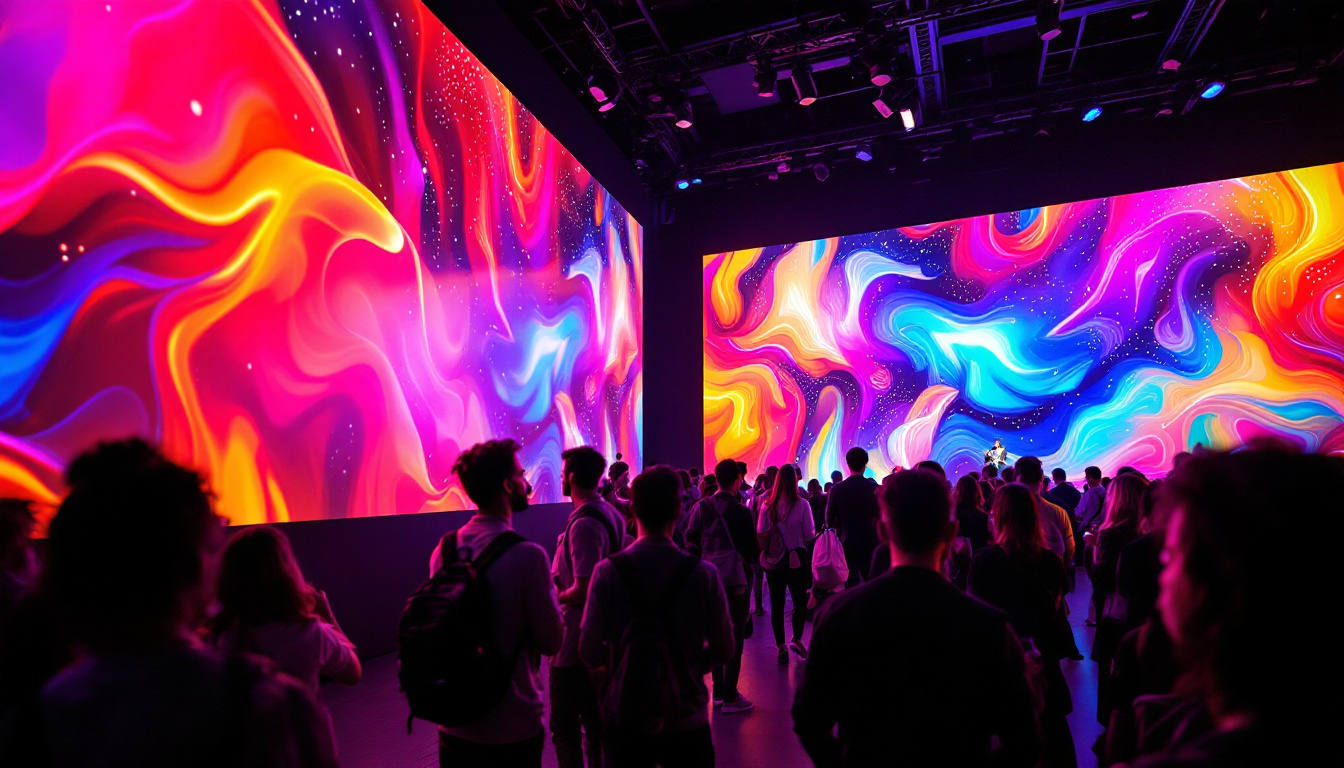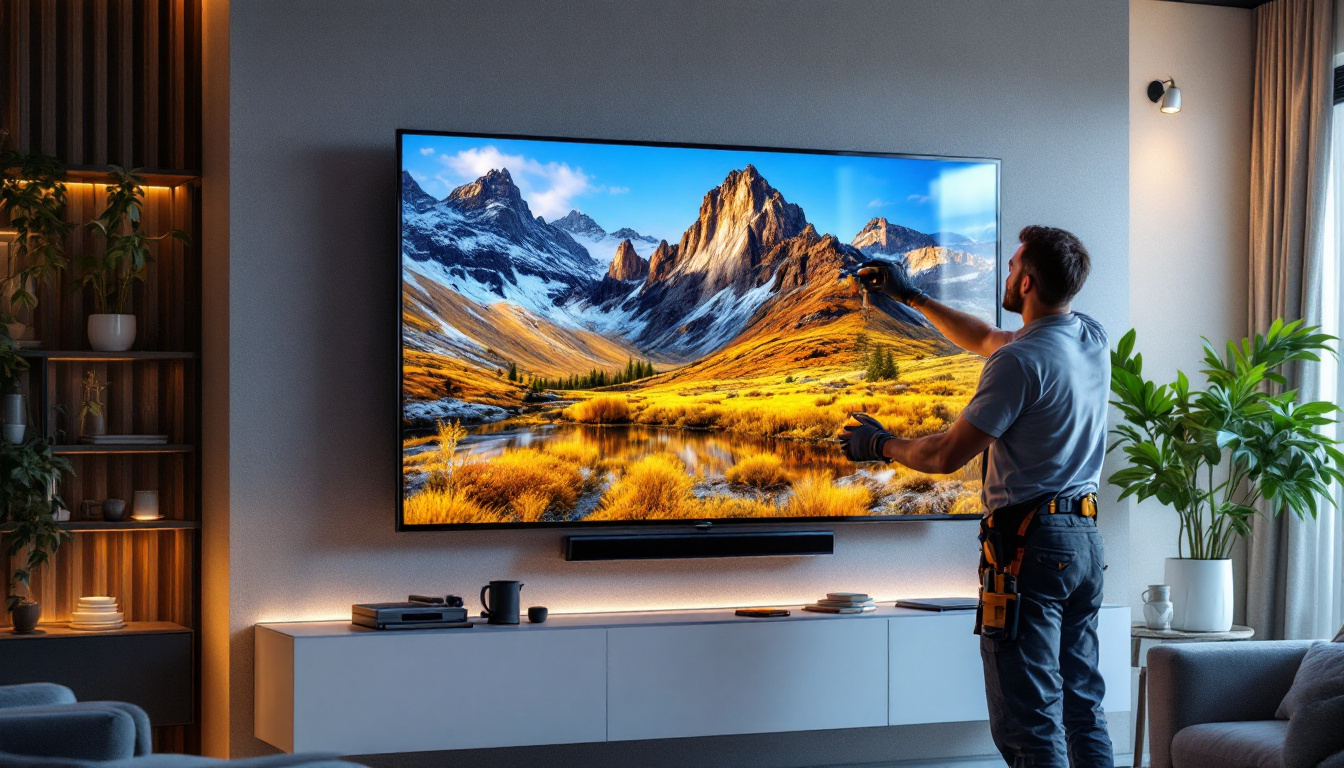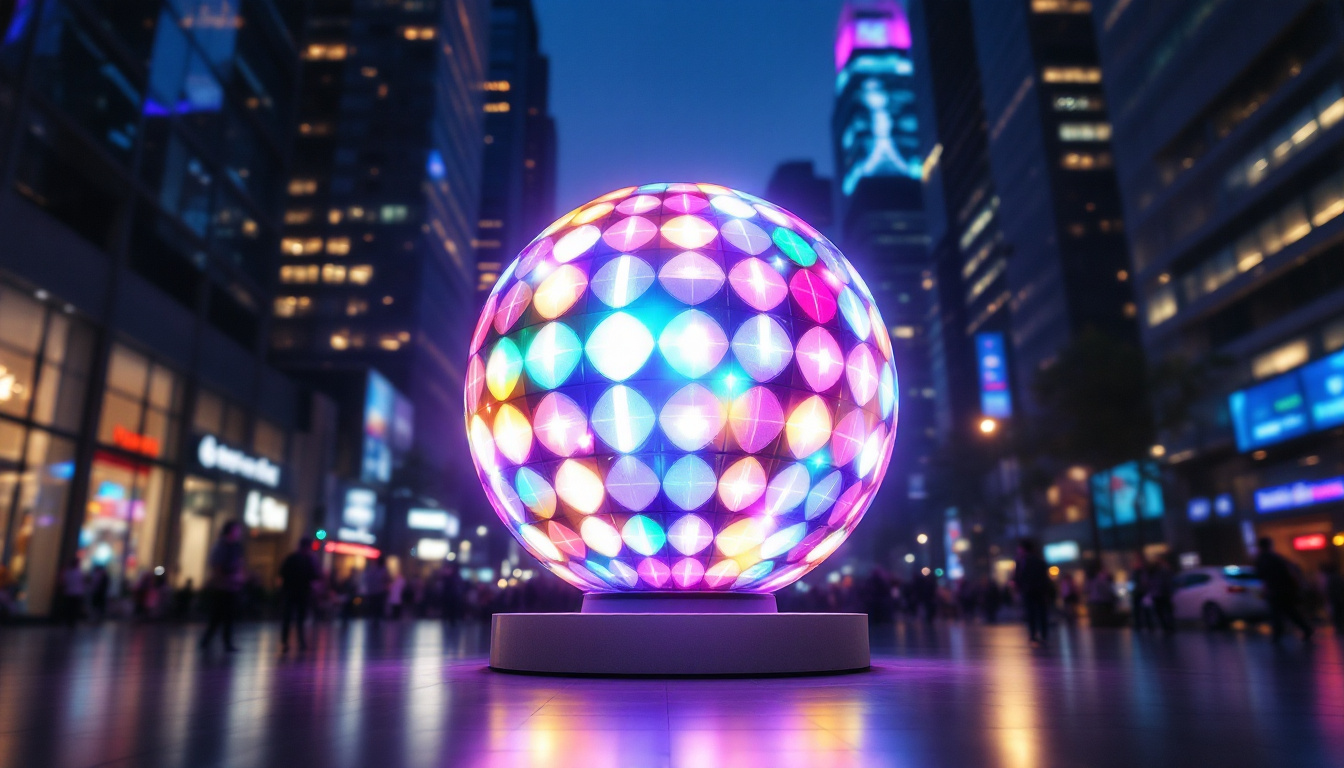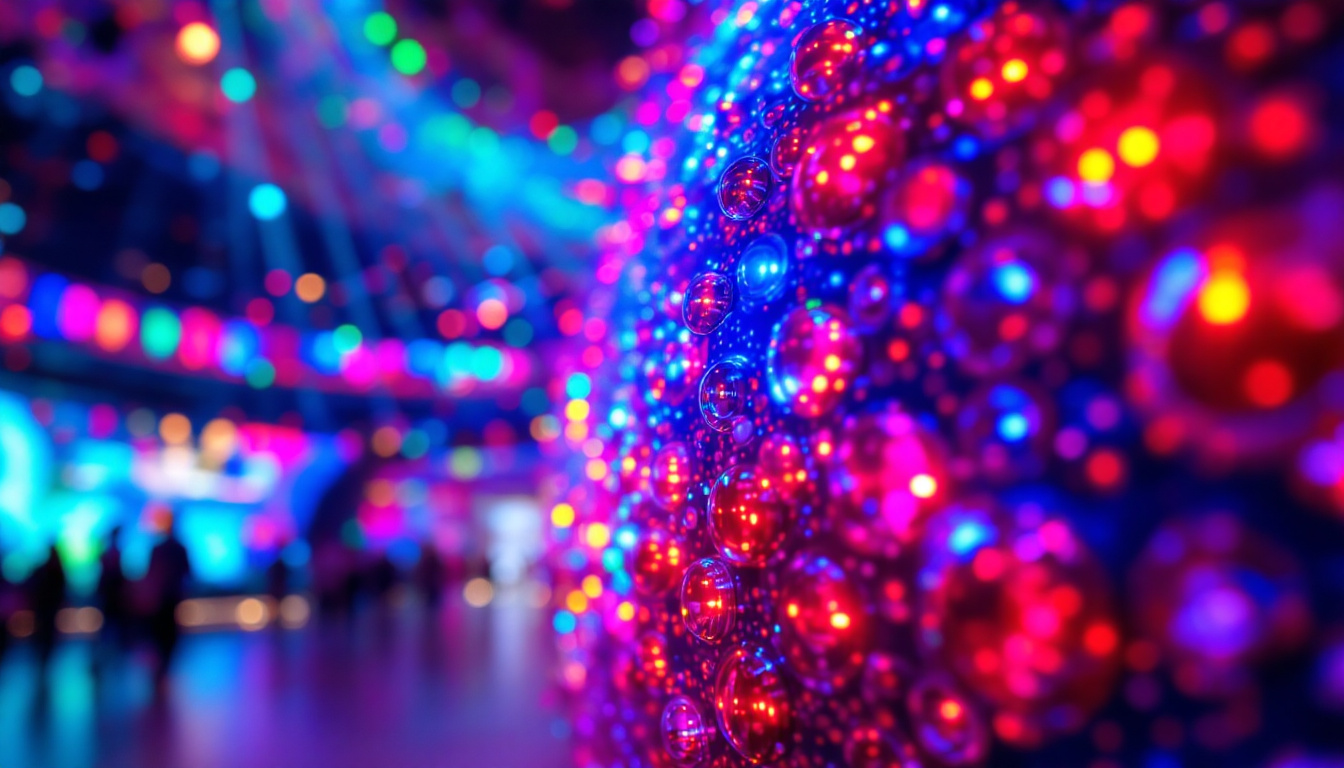In the modern age of technology, LED displays have become ubiquitous, transforming the way information is presented in various settings. From large billboards to small screens in electronic devices, LED technology has revolutionized visual communication. This article delves into the intricacies of LED displays, exploring their functionality, advantages, and applications.
Understanding LED Technology
At the core of LED displays lies the Light Emitting Diode (LED), a semiconductor device that emits light when an electric current passes through it. Unlike traditional incandescent bulbs, LEDs are energy-efficient and have a longer lifespan, making them a preferred choice for various applications. This efficiency not only reduces electricity costs but also minimizes heat generation, which can be a significant advantage in both residential and commercial settings.
The Science Behind LEDs
The operation of an LED is based on the principle of electroluminescence. When electrons recombine with holes in a semiconductor material, energy is released in the form of photons, which is visible light. The color of the emitted light depends on the materials used in the semiconductor, allowing for a wide range of colors to be produced. This versatility is particularly beneficial in applications such as stage lighting and decorative displays, where vibrant colors and dynamic effects are essential.
LEDs can be combined in various configurations to create displays of different sizes and resolutions. By adjusting the density of the LEDs and the arrangement of pixels, manufacturers can produce displays that meet specific visual requirements, from high-definition screens to large outdoor billboards. Furthermore, advancements in technology have led to the development of miniaturized LEDs, which enable even more intricate designs and higher pixel densities, enhancing the overall viewing experience.
Types of LED Displays
There are several types of LED displays, each designed for specific applications. The most common types include:
- Direct View LED Displays: These displays consist of individual LEDs arranged in a grid, providing high brightness and excellent visibility, especially in outdoor environments. Their robust construction makes them resistant to weather conditions, ensuring reliability in various climates.
- LED Backlit Displays: Often used in televisions and computer monitors, these displays utilize LEDs to illuminate an LCD panel, enhancing color accuracy and contrast. The backlighting technology has evolved, with edge-lit and full-array options available, allowing for improved uniformity and deeper blacks.
- Organic LED (OLED) Displays: A newer technology that uses organic compounds to emit light, OLED displays offer superior color reproduction and flexibility, making them ideal for smartphones and high-end televisions. The ability to create ultra-thin and bendable screens opens up new possibilities for innovative designs in consumer electronics.
In addition to these common types, there are also specialized LED displays, such as transparent LEDs, which allow for a see-through effect while still displaying vibrant images. These are increasingly popular in retail environments where businesses want to showcase products behind the screen. Another emerging technology is MicroLED, which promises even greater efficiency and brightness, potentially revolutionizing the display market by offering even higher resolutions and better energy performance.
Advantages of LED Displays
LED displays offer numerous advantages over traditional display technologies. Their benefits extend beyond mere aesthetics, impacting performance, efficiency, and user experience.
Energy Efficiency
One of the most significant advantages of LED displays is their energy efficiency. Compared to traditional lighting technologies, LEDs consume significantly less power, resulting in lower electricity bills and a reduced carbon footprint. This efficiency is particularly beneficial for large installations, such as outdoor billboards, where energy costs can be substantial. Furthermore, the reduced energy consumption of LED displays contributes to a more sustainable environment, aligning with global efforts to combat climate change. As businesses and organizations increasingly prioritize sustainability, the adoption of LED technology becomes a strategic choice that not only enhances their brand image but also demonstrates a commitment to environmental responsibility.
Longevity and Durability
LEDs have a remarkably long lifespan, often exceeding 50,000 hours of use. This longevity translates to fewer replacements and maintenance costs, making them a cost-effective solution in the long run. Additionally, LEDs are more durable than traditional bulbs, as they are less susceptible to breakage and can withstand harsh environmental conditions. This durability is particularly advantageous for outdoor displays, which are exposed to varying weather elements, such as rain, snow, and extreme temperatures. The robust nature of LED technology ensures that displays remain operational and visually appealing, reducing downtime and enhancing the overall return on investment for businesses that utilize them.
High Brightness and Visibility
LED displays are known for their high brightness levels, making them easily visible even in direct sunlight. This characteristic is essential for outdoor advertising and public displays, where visibility can significantly impact effectiveness. The ability to produce vibrant colors and sharp images further enhances the overall viewing experience. Additionally, LED technology allows for dynamic content that can be updated in real-time, providing advertisers with the flexibility to tailor their messages to specific audiences or events. This adaptability not only increases engagement but also allows for creative marketing strategies that can capture the attention of passersby, making LED displays an invaluable tool in today’s fast-paced advertising landscape.
Applications of LED Displays
The versatility of LED displays allows them to be used in a wide range of applications across various industries. From advertising to entertainment, the impact of LED technology is profound.
Advertising and Marketing
One of the most prominent applications of LED displays is in advertising. Digital billboards and signage allow businesses to showcase their products and services dynamically. The ability to change content quickly and easily enables marketers to tailor their messages to specific audiences or events, maximizing engagement and effectiveness.
Moreover, LED displays can be integrated with social media feeds and real-time data, creating interactive experiences that captivate viewers. This adaptability has made LED displays a staple in urban environments, where they contribute to the vibrant visual landscape.
Entertainment and Events
In the entertainment industry, LED displays play a crucial role in enhancing live performances and events. Concerts, festivals, and sports events utilize large LED screens to provide audiences with an immersive experience. These displays can showcase live feeds, graphics, and animations, elevating the overall atmosphere and engagement.
Additionally, LED technology is employed in theme parks and attractions, where dynamic displays create enchanting environments that captivate visitors. The flexibility of LED configurations allows for creative installations that enhance storytelling and visual appeal.
Transportation and Public Information
LED displays are widely used in transportation systems to convey essential information to passengers. From train stations to airports, digital signage provides real-time updates on schedules, delays, and safety announcements. The clarity and visibility of LED displays ensure that information is easily accessible, improving the overall travel experience.
Furthermore, LED technology is utilized in traffic management systems, where variable message signs inform drivers about road conditions, accidents, and detours. This application enhances safety and efficiency on roadways, contributing to smoother traffic flow.
Challenges and Considerations
While LED displays offer numerous benefits, there are also challenges and considerations that must be addressed. Understanding these factors is essential for effective implementation and usage.
Initial Costs
Despite their long-term cost savings, the initial investment for LED displays can be significant. High-quality LED technology often comes with a higher price tag compared to traditional display options. Businesses must weigh the upfront costs against the potential savings in energy and maintenance over time.
Environmental Impact
While LEDs are more energy-efficient, the production and disposal of LED displays raise environmental concerns. The materials used in manufacturing LEDs, such as rare earth elements, can have negative environmental impacts. Additionally, proper disposal and recycling of electronic waste are crucial to mitigate the ecological footprint of LED technology.
Technical Complexity
Implementing LED displays can involve technical complexities, particularly for large-scale installations. Proper calibration, maintenance, and software integration are essential for optimal performance. Businesses may need to invest in training or hire specialized professionals to ensure that their LED displays operate effectively.
The Future of LED Displays
The future of LED displays looks promising, with continuous advancements in technology driving innovation and expanding applications. As industries evolve, LED technology is expected to play an increasingly vital role in shaping visual communication.
Advancements in Technology
Emerging technologies, such as MicroLED and MiniLED, are set to revolutionize the display industry. These innovations promise higher resolutions, improved color accuracy, and even greater energy efficiency. As manufacturers continue to push the boundaries of LED technology, consumers can expect to see displays that are more versatile and visually stunning.
Integration with Smart Technology
The integration of LED displays with smart technology is another trend on the horizon. As the Internet of Things (IoT) continues to grow, LED displays will increasingly be connected to networks, enabling real-time data sharing and interactivity. This integration will enhance user experiences and open new avenues for advertising and information dissemination.
Sustainability Initiatives
With growing awareness of environmental issues, the display industry is also moving toward more sustainable practices. Manufacturers are exploring eco-friendly materials and recycling programs to minimize the environmental impact of LED displays. These initiatives will contribute to a more sustainable future while maintaining the benefits of LED technology.
Conclusion
LED displays have transformed the landscape of visual communication, offering a myriad of advantages that cater to various applications. From their energy efficiency and longevity to their vibrant visuals and adaptability, LED technology has become an integral part of modern life.
As advancements continue to shape the future of LED displays, businesses and consumers alike can look forward to even more innovative solutions that enhance communication and engagement. Understanding the intricacies of LED technology is essential for harnessing its full potential, ensuring that it remains a powerful tool in the ever-evolving world of visual media.
Discover LumenMatrix’s Innovative LED Solutions
Ready to elevate your visual communication with cutting-edge LED technology? Explore LumenMatrix’s comprehensive range of LED display modules, from vibrant Indoor and Outdoor LED Wall Displays to dynamic Vehicle and Sports LED Displays. Whether you’re looking to captivate with a LED Poster Display, engage with a Floor LED Display, or innovate with Custom and All-in-One LED solutions, LumenMatrix has you covered. Experience the future of digital signage with our LED Transparent Displays and revolutionize how you connect with your audience. Check out LumenMatrix LED Display Solutions today and transform your brand’s visibility with unforgettable visual experiences.

